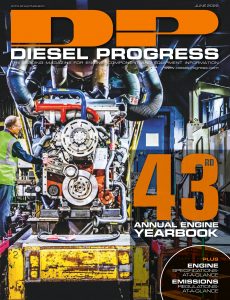
Diesel Progress – June 2022
English | 73 pages | pdf | 41.05 MB
It’s been suggested by a lot of very bright people that the sun is setting on the internal combustion engine. It’s hard not to think that might be the case, in light of ever- more-stringent emissions regulations and other governmental decrees that call for outright engine bans at specific dates.
Yet on the occasion of our 43rd annual Engine Yearbook, it’s hard for me to envision a world without any engines in it.
That’s not because of any particular sentimental or commercial attachment. The content in Diesel Progress Magazine has always been about much more than engines. And the name notwithstanding, we’ve probably been covering all of the emerging commercial power options – batteries, fuel cells, etc. – as long and diligently as anybody. That will continue. Whatever provides the power that machine and vehicle manufacturers use to make things move and do work, we’ll tell you about it. Visiting the recent Advanced Clean Transportation (ACT) Expo, there were lots of shiny examples of where the future may lie, with myriad electric vehicles and chassis on display and even operating. In some segments, that future might be very soon and if I ran a fleet of school buses, yard tractors or last-mile delivery vehicles, it might be worth the currently huge acquisition cost to give BEVs a try.
Still, much of the promise and potential of the new forms of power hinges on the installation of massive (and massively expensive) infrastructure. How fast that can be done is a big question, with “OK, who’s paying for all that?” close behind. And with that – maybe because of that – combustion engines may have more life left in them
than many believe. The same relentless drive and focus that saw diesel emissions get reduced by about 98% over the last couple of decades is now being turned on that last few percent. Throw in zero-carbon fuels – hydrogen, renewables, etc. – and who knows how low engines can go? (Spoiler alert: maybe all the way to zero if some of those working on hydrogen combustion can be believed, which you’ll read about in an upcoming issue.)
The U.S. Energy Information Agency predicts that electric vehicles will make up 31% of the global light vehicle fleet in 2050. Looked at another way, it means that in the segment that’s generally accepted as the most promising and easiest for electrification, 7 out of 10 vehicles will be driven by something other than electricity. In 28 years.
The sun may indeed be going down on engines. But I’d wait awhile longer to ditch the sunscreen
Download from: